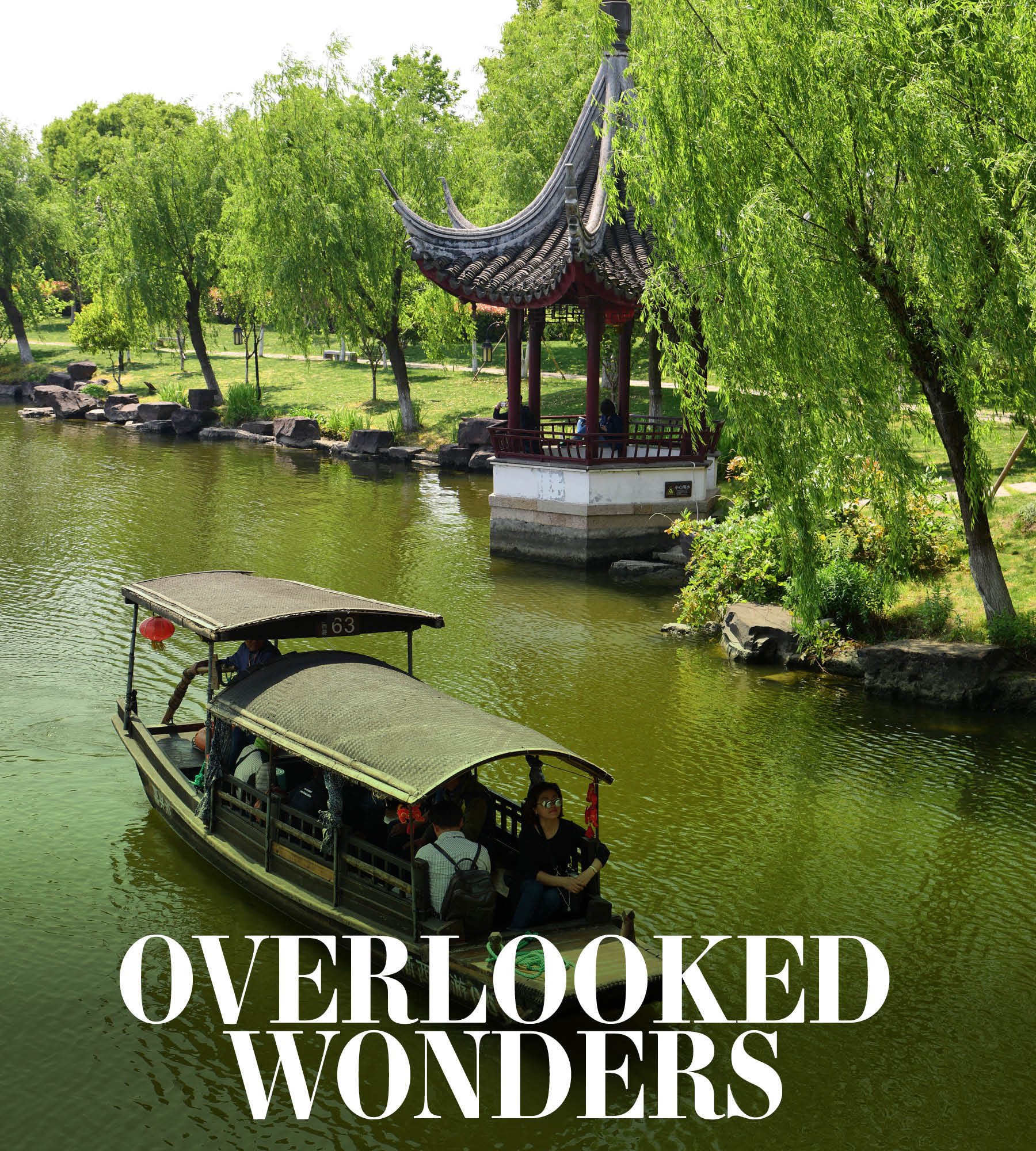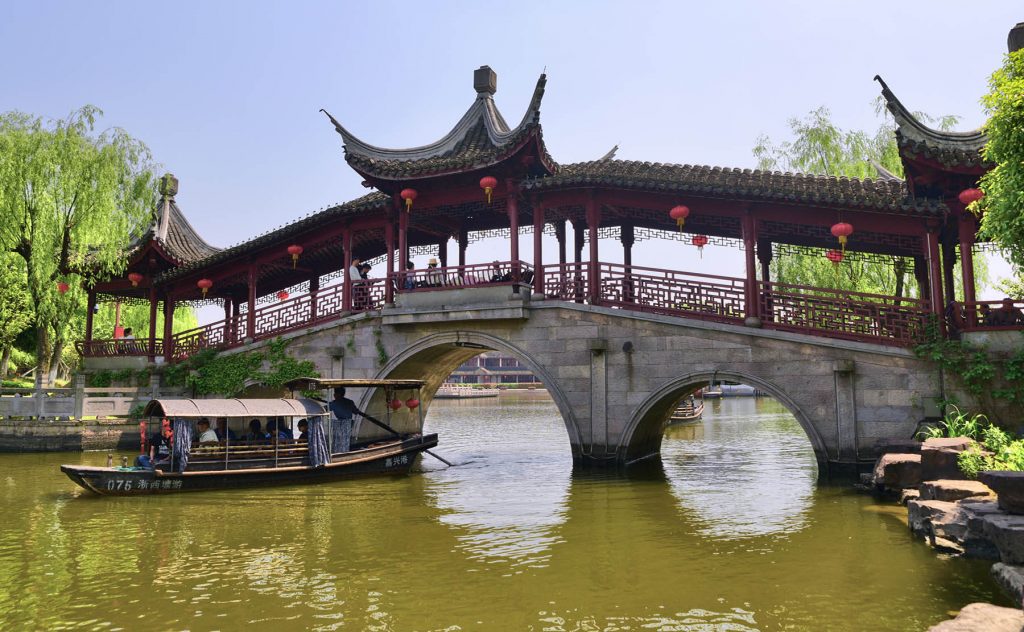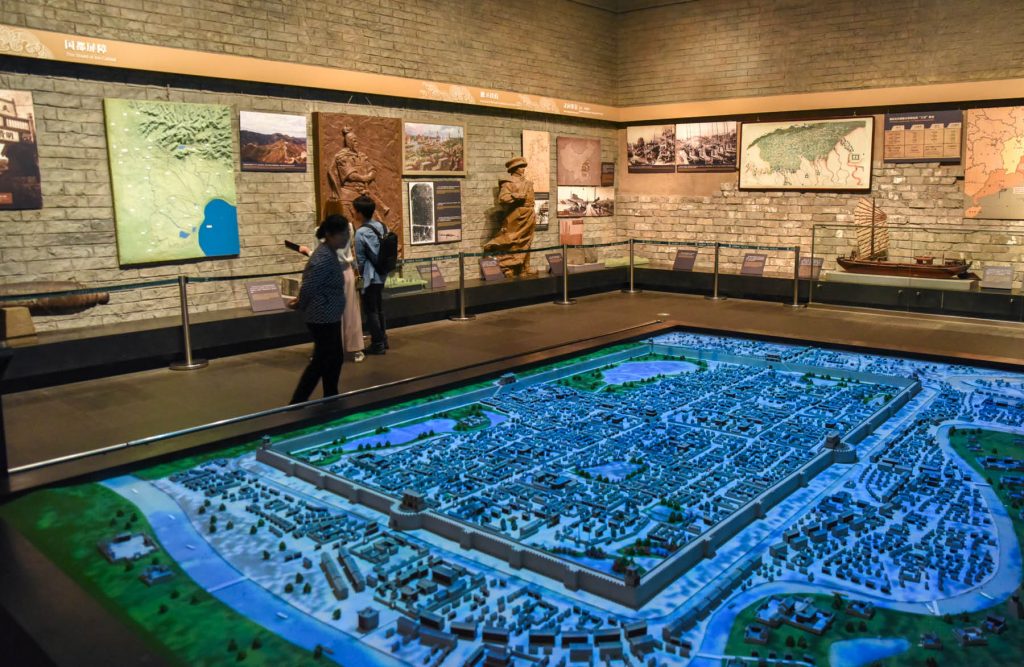Language
You can read the magazine in one of the following languages
Geolocation
You can read the global content or the content from your region

With a similar land area to the United States but with four times the population, China is so colossal that it’s laden with remarkable sights that receive few foreign visitors. Across my 11 trips to China, I’ve been awed by many such locations, from ancient towns to monumental museums, canal communities, splendid mansions and former Imperial capitals.
Now that China has started issuing visitor visas again, travelers can venture beyond its tourist trail to discover places that reveal this enormous country’s natural splendor, deep history, sterling architecture and distinctive culture. Here are five of China’s finest off-the-radar attractions.
The small, wooden Sampan boat glides along a canal, past historic shophouses, beneath tilted trees and under an arched stone bridge. It is propelled by the oar of a middle-aged man wearing a blue Tang suit, a traditional outfit worn by traders who once did business along the waterways of this 2,500-year-old community called Xitang.
It was built as a port on the Grand Canal, an 1,800 kilometer network of artificial waterways. But today, Xitang operates as a tourist attraction, some 60 kilometers south-west of Shanghai. Frequented mostly by locals, it is essentially an open-air museum that showcases how towns near Shanghai looked centuries before the city became cloaked in skyscrapers.

Visitors can stroll along the canals, take a relaxing Sampan ride and peruse a labyrinth of narrow side streets.
Like a Chinese version of Italy’s Venice, Xitang is wonderfully photogenic thanks to its nine canals, which are crossed by about 100 old bridges and surrounded by wooden, covered walkways. Visitors can stroll along the canals, take a relaxing Sampan ride and peruse a labyrinth of narrow side streets. There they’ll find dozens of well-preserved and attractive buildings.
These range from shrines to mansions and teahouses, some up to 1,000 years old. None is more splendid than Sheng Tang Temple. Dating back to the Ming Dynasty (1368–1644), it is dedicated to Guan Yu, a revered Chinese commander. Tourists to Xitang can also enhance their understanding of Chinese art forms at one of its small but informative museums. These facilities variously focus on buttons, root carvings, decorative tiles and woodwork.
Prince Gong’s Mansion often is omitted from tourist guides to Beijing. That says more about the enormity of China’s capital than it does about the quality of this ancient complex. Almost 22 million people reside in Beijing – equivalent to London, Berlin, Rome and Barcelona combined – which has existed for at least 3,000 years.
As a result, Beijing has many fantastic sites largely bypassed by tourists, who are distracted by the Great Wall of China, the Forbidden City, the Temple of Heaven and the Summer Palace. From a tourism perspective, Prince Gong’s Mansion hides in plain view in the downtown area.

The 32,000-square-meter mansion was built in the 1770s for a Qing Dynasty minister before it became home to Prince Gong in 1851. Arranged around 12 courtyards, visitors can peer into the interior of some of the mansion’s dozens of rooms, which are lavishly decorated by intricate woodwork, antique furniture and vivid murals.
Behind these grand buildings lies a 28,000-square-meter garden that is worth the visit alone. One of the finest Chinese classical gardens in Beijing, it is embellished by an array of ponds, streams, paths, pagodas, walkways, bridges and flower beds. Each was carefully positioned according to the ancient Chinese belief system of feng shui, which aims to arrange physical spaces in a manner that creates cosmic harmony.
Few people outside of China are familiar with Tianjin, yet it is as big as New York, with a population of 14 million. This humongous city bulges with attractions, which are rarely enjoyed by foreigners, who tend to stick closely to China’s tourist trail of Shanghai, Beijing, Xi’An and Chengdu.
From Beijing, Tianjin is just 35 minutes away courtesy of China’s fine high-speed rail network. Stepping out of Tianjin Railway Station, the first impression is how neat, organized and modern this city is. A short distance to the west is a cluster of picturesque European neighborhoods established in the mid-1800s by Italy, Hungary, Austria, Belgium, France, Russia, Germany and the United Kingdom.

Stepping out of Tianjin Railway Station, the first impression is how neat, organized and modern this city is.
The history behind these enclaves, which were borne out of the second Opium War, is explained at the humongous Tianjin Museum. China invests an extraordinary amount of money in museums and has built more than 20 major new museums in the last three years alone.
From a distance, Tianjin Museum looks like a massive, concrete military bunker. That belies its refined interior, where giant windows illuminate its modern lobby, which leads to three floors of exhibits.
These galleries showcase items from the museum’s 150,000-piece collection. Yuan Dynasty (1271–1368) porcelain, traditional Chinese inkstones and ancient bronze mirrors are displayed alongside Chinese calligraphy, sculptures, paintings and artifacts, which explain Tianjin’s origins.
Pandas lure many tourists to Chengdu, home to the Giant Panda Breeding Research Base, where visitors can see more than 100 of these rare animals. Lucky travelers may also spot a panda in the wild, as their main habitat is in the snow-licked mountain range on Chengdu’s western fringe.
Those black-and-white animals have famously poor eyesight. So even from up on these peaks they can’t spot the quaint, 1,400-year-old town of Anren, just below them on the outskirts of Chengdu. Like every site in this story, Anren is popular with domestic visitors but largely anonymous to foreigners.

To see and feel China from a bygone era, tourists typically need to venture beyond metropolises.
Yet it could be a magnet for international travelers. Chinese cities have become so modern that few traditional neighborhoods remain. To see and feel China from a bygone era, tourists typically need to venture beyond metropolises to preserved towns like Anren, about 50 kilometers from downtown Chengdu.
Decorating its weathered stone streets are more than 200 historic buildings, some of which date back to the 16th century. These wooden shophouses, teahouses and shrines are complemented by 27 stone mansions built in the early 1900s. Anren’s greatest appeal lies in wandering and witnessing a rare ancient sliver of a country that’s modernizing at a sprint.
Some 900 years ago, the world’s biggest city was in the capital of China’s Song Dynasty, a place called Kaifeng. Back then, this city of almost one million people was protected by three rings of high walls.
The reason for this extreme level of fortification is that Kaifeng was enormously wealthy, with huge volumes of goods and money passing through its Grand Canal ports each day. People traveled from across China to glimpse Kaifeng’s imposing temples and Imperial palace.
These days, few international visitors step foot in Kaifeng, largely due to its location. It is 560 kilometers south of Beijing, 750 kilometers west of Shanghai and 480 kilometers east of Xi’an. Simply put, it is not close to anywhere foreigners frequent. Those who do make it to Kaifeng will find that, although only a few of its Imperial sites remain intact, several have been meticulously rebuilt.

A long, beautifully landscaped promenade stretches across Yangjia Lake to Dragon Pavilion. This commanding structure, flanked by pretty gardens, is a re-creation of an 11th century Imperial mansion. From the elevated perch of this stately structure, tourists can spy sites that did survive Kaifeng’s Imperial reign.
About two kilometers to the north-east, the Iron Pagoda rises 57 meters above a shady park. Also known as Yougou Temple, this glazed-brick tower was built almost 1,000 years ago. By climbing its 168 stairs, tourists can admire its stonework and gain an expansive view of what was once China’s most important city.